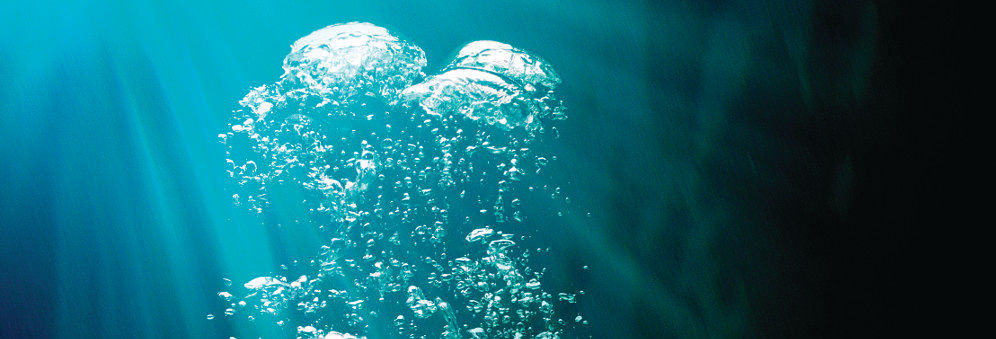Cretaceous Sediment Investigations (CSI) of the Deep Biosphere
Buried deep within the sediments at the bottom of the ocean – up to a kilometer below the seafloor – there are organisms that we know little more about than had we discovered them on Mars. But thanks to Bristol researchers, we are learning more each day.
These microbes test our very definition of life, metabolising at rates so slow as to be immeasurable during our lifetime and taking a thousand or more years for a single cell to divide. Yet, these microbes combine to account for up to as much as one-third of the total biomass on the planet – an ecosystem known as the Deep Biosphere.
The sediment accumulates so slowly at these depths that it could take a thousand years before a grain is covered by another grain. This means that microbes buried hundreds of metres in sediment originate from populations that were scavenging the sea floor at the time the dinosaurs roamed the Earth. Yet, food sources for these microbes are scarce even at the ocean-sediment interface, let alone buried hundreds of metres below, so how do these microbial populations sustain themselves for millions of years? And how do they alter the sedimentary record- one of the most important climate archives on Earth over these time spans?
Answering this question in the most inaccessible ecosystem on the planet, with organisms whose biology defies measurement is no easy task. However, Dr. Sandra Arndt, a Natural Environment Research Council Postdoctoral Research Fellow in the School of Geographical Sciences is taking a modelling approach to do just this.
Arndt uses observations gathered from cores collected through the Ocean Drilling Program, such as interstitial water profiles that include information on methane, sulphate, barite and organic matter, to build numerical models that work backwards through time to help understand what organic matter was accessible to these microbes, how they access it and at what rates.
“We did this for the Cretaceous black shales,” said Arndt, “which was quite interesting because throughout geological history there are times when quite a lot of carbon was buried very rapidly and the Cretaceous was such a time because the ocean was almost completely anoxic. This ocean anoxia produces layers in the sediment that are high in organic carbon, and these microbes feed on that.”
Arndt uses her models to test hypotheses about which biogeochemical processes have predominantly controlled the degradation of the organic matter. She’s also able to put values to the reaction rates, which contributes to a better understanding of this unexplored environment and helps reconstruct the history of these black shale layers.
“What we want to do is reconstruct what happened in the past hundred million years,” said Arndt, “as well as understand how the world looked 100 million years ago. How was the ocean? What did it look like? You need the models to do that because they allow you to really rewind the tape.”
Arndt compares her research to the work of Crime Scene Investigators as she is trying to build an understanding of what happened based on very few observations.
“Just like in CSI you really need to work a lot with colleagues, because you can’t really do it alone” explained Arndt. “For instance, my model can give me a number that tells me that the reactivity of this organic matter was really low already at the time of deposition, but it doesn’t tell me why. I have to go back and speak with my colleagues and we fit this information with what they know and together we fill in the puzzle pieces. It really is a team effort because we work in an area that’s so deprived of information, you really have to throw in every bit of information you can get.”
Also like CSI, Arndt’s work rarely has an obvious smoking gun.
“It can be frustrating,” said Arndt. “It’s a lot of work and you don’t always have this moment where you think ‘Wow – that’s it!’. It might not be until much later, after speaking with colleagues, that you even realise some number that you have come up with is of interest.”
Arndt is ultimately interested in the impact that carbon burial, and the subsequent processes that occur post-burial, have on the global biogeochemical cycles and climate. Although her models could be used to predict forward, Arndt says her preference is to look back in time.
“I’m a little bit critical of modelling the future because people often extrapolate out what they see in the model, without really understanding it,” says Arndt. “We definitely need to develop an understanding of what might happen under changing climate conditions and we certainly can’t wait until we know everything, because that will never happen. It’s good to work with the tools we have, but we have to be very critical about them and continue to improve them.”
Related research groups
 Apply to the SW Biosciences Doctoral Training Partnership
Apply to the SW Biosciences Doctoral Training Partnership
Develop outstanding cross-disciplinary research skills in this unique partnership.
